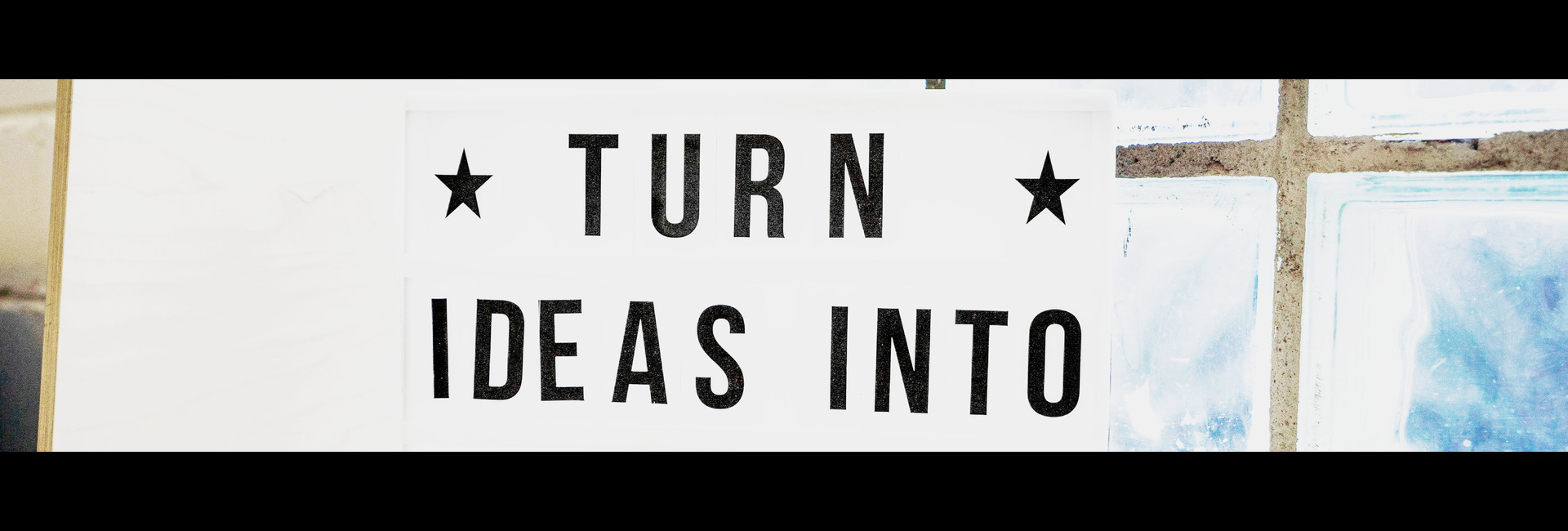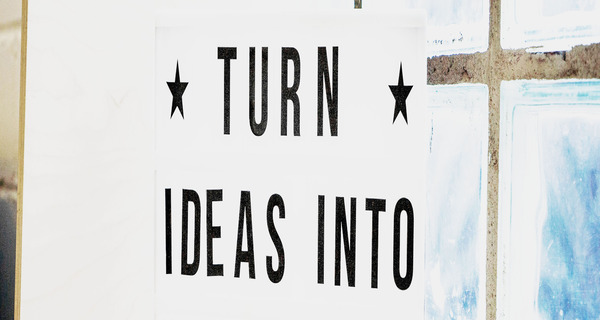
Used under a Creative Commons Licence
How Designers Can Protect Their Ideas: From Spark to Security
Ideas are strange, fragile things. They start as flickers — sometimes at 2 am, or while you’re untangling a ribbon in your studio — and if you’re not careful, they can vanish, or worse, be taken by someone else.
Imagine that you have just designed a sculptural chair that folds like origami, or a sandal that transforms from casual to evening wear with a quick change of strap. You’re proud, excited, and ready to share it. But you also have that little pang of worry — what if someone copies it?
You can’t copyright a thought. In Australian law, an “idea” by itself isn’t protected. What you can protect is the expression of that idea — the drawing, the prototype, the branding, the physical or visual form.
At DesignWise, powered by Sharon Givoni Consulting (https://sharongivoni.com.au/) , we help designers transform inspiration into intellectual property — the kind that holds its value in both creativity and commerce.
From Concept to Creation: What Law Actually Protects
Let’s start with a simple truth:
“Genius is one percent inspiration and ninety-nine percent perspiration.” — Thomas Edison
In law, that perspiration is what counts. Once you give your idea form — whether that’s a sketch, model, CAD file, or finished product — it starts to attract potential protection under different areas of IP law.
Here’s how they work for designers:
- Copyright protects your drawings, sketches and artworks — but not the functional 3D product.
- Design Registration protects the look of your product — its shape, pattern, or ornamentation.
- Trade Marks protect your brand — your name, logo, and reputation.
- Confidentiality Agreements (NDAs) protect your discussions and concepts before they’re public.
- Patents, by contrast, protect inventions (how something works) — rarely relevant for visual design unless there’s a technical mechanism involved.
A Hypothetical: The Ribbon Chair
Suppose you’ve designed a chair that wraps around the body in one continuous ribbon of timber. It’s unlike anything on the market — sculptural, ergonomic, minimal.
You show it at a local exhibition. Weeks later, you see a similar design on Instagram — different materials, same distinctive curve. You feel gutted.
Here’s what you could have done first:
- File a Design Application with IP Australia before exhibiting or posting online.
- This locks in your priority date and protects the chair’s appearance.
In about four to six weeks, your design is officially registered.
Later, you can request examination to get it certified, which allows you to enforce it.
Mark it “Design Registration Pending” on promotional materials. This signals to competitors that you’re serious.
Register a Trade Mark for your studio name or the collection name, so if others imitate your style, your brand remains distinctive.
Use a Non-Disclosure Agreement (NDA) before you show prototypes to potential manufacturers or collaborators. That way, if talks fall through, they can’t lawfully copy what they’ve seen.
Designs: Protecting the Look
Design registration is particularly powerful for visual creators. It grants the exclusive right to make, sell, or license products that embody your design.
It doesn’t protect how the product works — only how it looks. But that’s often where a designer’s soul lies: the line, the silhouette, the gesture.
Protection lasts for five years, renewable once for up to ten years. That decade can make all the difference between being the originator and being forgotten.
Trade Marks: Protecting the Name and Identity
Your brand is your signature. Once you’ve chosen a memorable name — say RibbonHaus™ or The Sole Edit® — registering it as a trade mark ensures that no one else in Australia can sell similar products under that name.
Trade marks are examined within three to four months, and if accepted, registered within six to eight months. They last ten years, renewable indefinitely.
Once filed, you can use ™; once registered, you can proudly use ® — the simplest signal that your creative identity is protected by law.
NDAs: Protecting the Conversation
Many designers lose control of their ideas in conversation. You might show a manufacturer your sketches over coffee, or discuss your concept with a potential investor — and suddenly the same idea appears elsewhere.
A tailored Non-Disclosure Agreement (NDA) prevents that. It’s a legal contract that says, in plain terms:
“You can look, but you can’t use or share.”
At DesignWise, we draft NDAs that are practical and enforceable — not the vague, Americanised templates floating online. Each one is designed to fit your situation, referencing your pending designs or trade marks, and setting out exactly what’s confidential, how it can be used, and what happens if it’s breached.
Remember, though, confidentiality only lasts as long as the information remains secret. Once your design is public — on social media, in a pitch deck, or in a prototype display — you can’t reclaim that privacy. So timing is key.
Knowing the Limits
Even with these rights, it’s vital to stay realistic. Law can deter and remedy copying, but it can’t stop every risk.
Design infringement depends on whether another product is substantially similar in overall impression — a nuanced legal test.
Trade mark rights protect against confusing similarity, not every resemblance.
NDAs can’t stop someone from using what’s already public or independently created.
Still, combining these protections is the smartest and most commercially sound strategy a designer can take. It signals professionalism, seriousness, and ownership.
Why Early Filing Matters
All IP protection begins with one principle: file before you reveal.
Australia offers a brief grace period for designs, but other countries don’t. So before you post your product on Instagram, show it at a market, or pitch to retailers, make sure your filings are in place.
Early registration turns your inspiration into a dated, legal asset. It’s a safety net that costs far less than fighting a copycat later.
How DesignWise (Powered by Sharon Givoni Consulting) Can Help
We know designers — people who think in sketches, colour palettes, materials and form, and who want their work to outlast trends. At DesignWise, powered by Sharon Givoni Consulting, we help you protect your ideas through design registrations (preparing and filing drawings and statements of newness with IP Australia), trade marks (securing your brand name and logo for long-term protection), and NDAs and agreements (drafting contracts that keep your ideas confidential and enforceable).
We also provide commercialisation advice to guide you through licensing, manufacturing and collaborations, and conduct IP audits to uncover hidden value in your creative portfolio.
With over 25 years’ experience protecting ideas across fashion, interiors, consumer goods and technology, our team turns Legalese into LegalEase® — step by simple step.
So if you’re on the verge of launching something special — whether it’s a chair, a shoe, a pillow or an entirely new way of doing things — come to us first and we’ll help you protect it before you share it with the world.
10 Famous Australian Inventions
- Boomerang – Developed by Indigenous Australians (across multiple regions): one of the world’s earliest aerodynamic tools.
- Black Box Flight Recorder – Invented by Dr David Warren (Victoria): transformed global aviation safety.
- Dual-Flush Toilet – Created by Bruce Thompson at Caroma (South Australia).
- Hills Hoist – Designed by Lance Hill (South Australia): rotary clothesline.
- Wi-Fi Technology – Developed by Dr John O’Sullivan and the CSIRO team (New South Wales).
- Cochlear Implant – Invented by Professor Graeme Clark (Victoria): pioneering “bionic ear.”
- Polymer Banknotes – Created by the CSIRO and Reserve Bank of Australia (Victoria): world’s first plastic banknotes.
- Ultrasound Scanner – Developed by Dr David Robinson and George Kossoff (New South Wales): non-invasive imaging technology.
- Electric Drill – Invented by Arthur James Arnot (Victoria): first electric drill, patented in 1889.
- Google Maps – Originally designed by Lars and Jens Rasmussen and team at Where 2 Technologies (New South Wales).
Please note the above article is general in nature and does not constitute legal advice.
Please email us info@iplegal.com.au if you need legal advice about your brand or another legal matter in this area generally.

